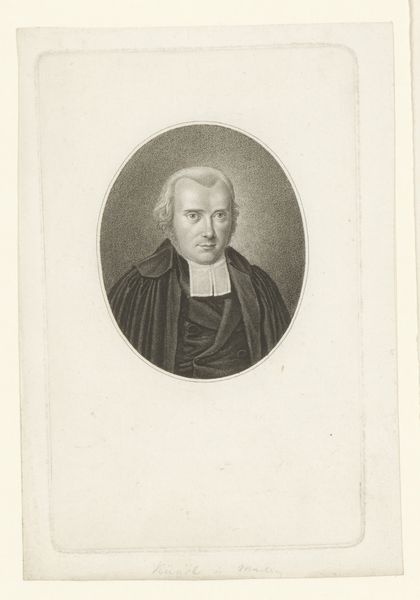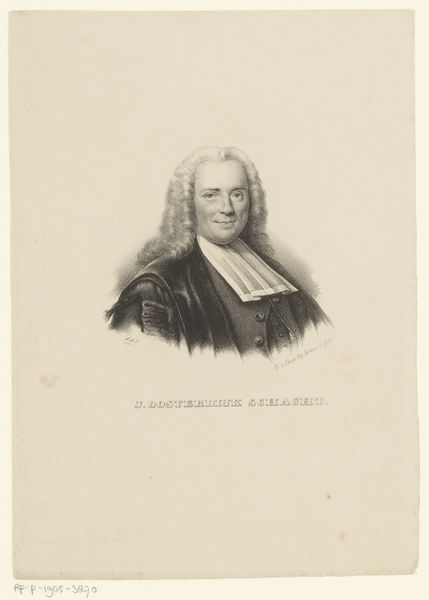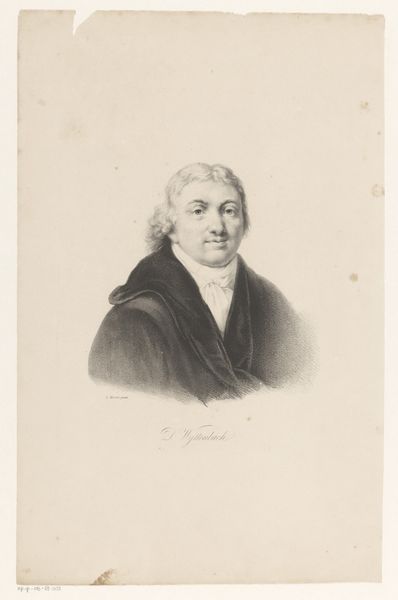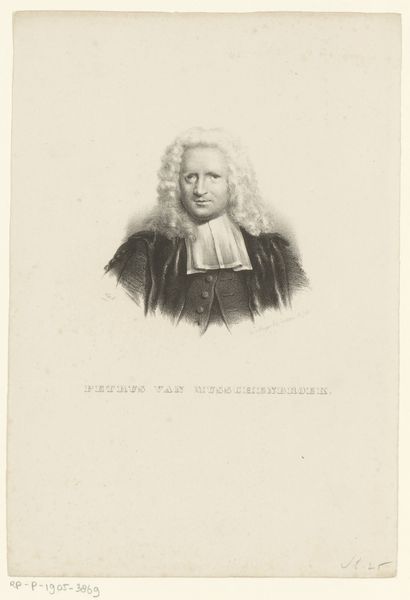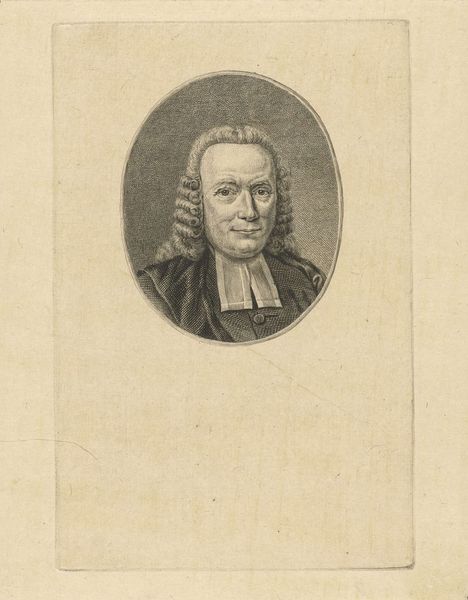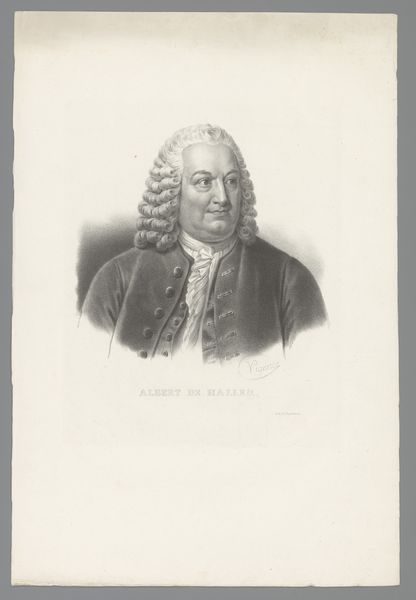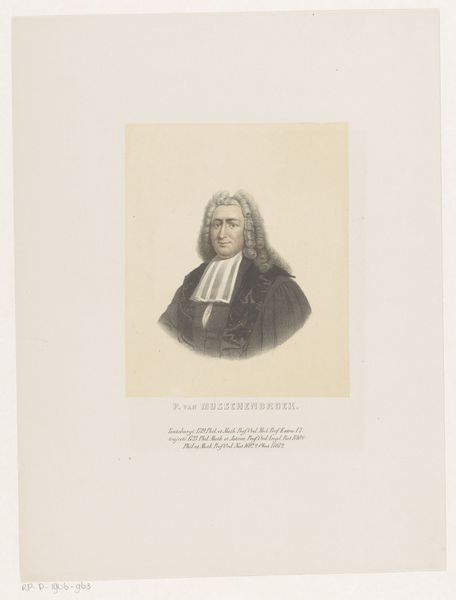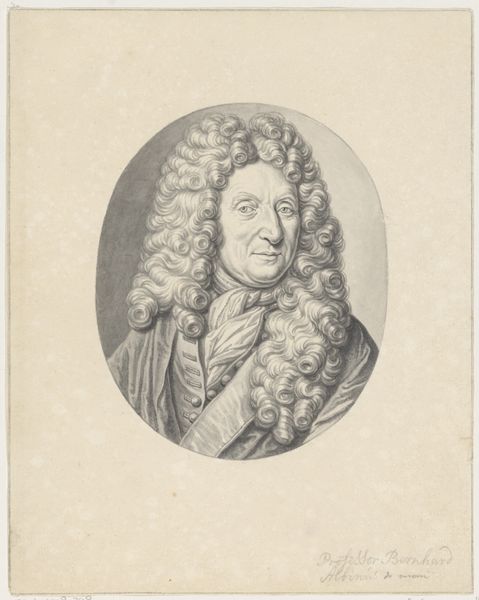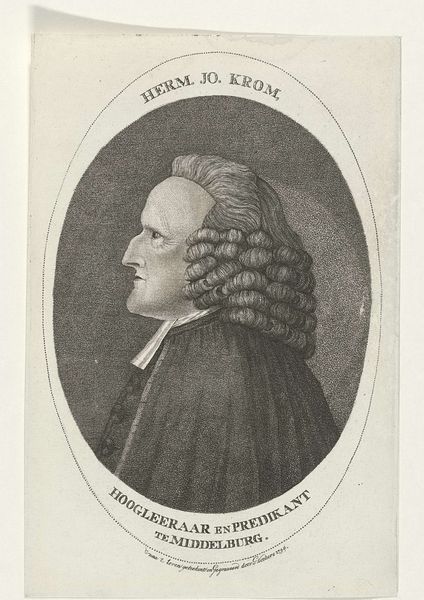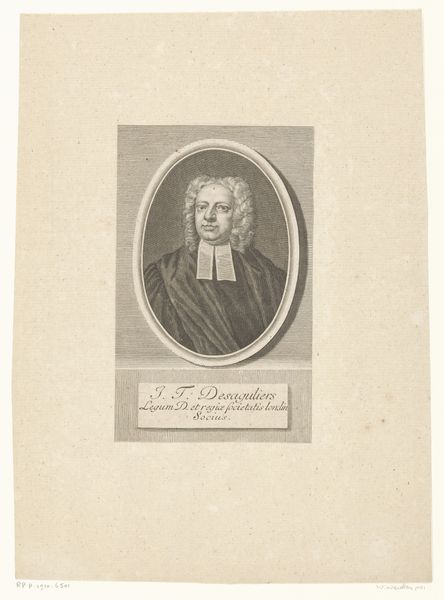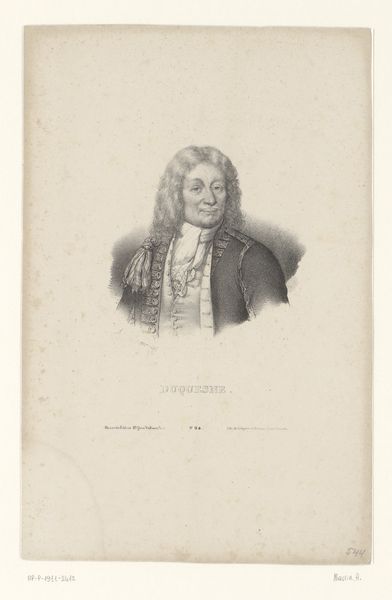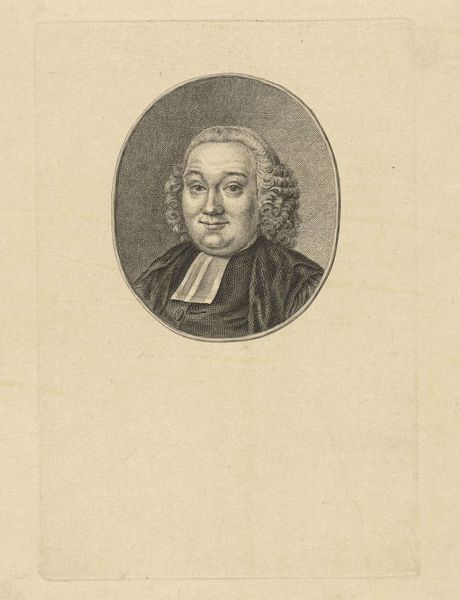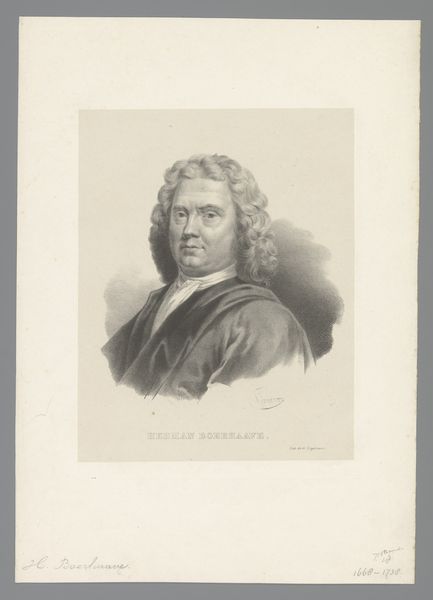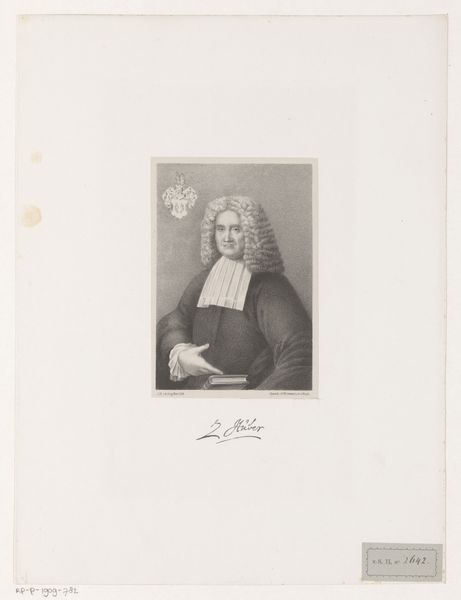
drawing, print, paper, engraving
#
portrait
#
drawing
#
neoclacissism
# print
#
paper
#
engraving
#
monochrome
Dimensions: height 249 mm, width 146 mm
Copyright: Rijks Museum: Open Domain
Curator: This is a portrait of Jean-Baptiste de Montyon, rendered as a print in monochrome. What's grabbing your attention about it? Editor: The wig! I mean, what's the story there? Is it like a costume, a character, or just something folks wore back then? Seriously, it feels like this massive statement piece dwarfing everything else! Curator: Absolutely. The portrait, crafted between 1811 and 1871, locates us within the era of Neoclassicism. We see an adoption of classical ideals regarding order, symmetry, and rationality, evident in the subject’s composed demeanor and the overall formal approach to portraiture. Now, about the wig... Editor: Do tell! It's screaming for context. Curator: In 18th and 19th-century society, wigs served as powerful markers of status, profession, and social standing. They were closely tied to gender norms, performance, and displays of power, especially within legal and aristocratic circles. It’s fascinating how clothing in portraits and artwork isn’t only aesthetic but profoundly performative! Editor: Okay, mind blown a bit! I hadn't thought about the wig as a symbol of societal norms but looking again, it seems pretty performative! I love how it shifts the way I look at art. It isn’t just a depiction; it’s a historical record, shouting secrets across the ages! I can spend hours reading one image after this kind of exploration! Curator: Precisely! These artworks engage us in a continuing dialogue about historical conditions. Now I see an artwork. And more! Editor: Right? I will see that big wig for a lot of other things from now on!
Comments
No comments
Be the first to comment and join the conversation on the ultimate creative platform.
